Treeless saddles are all the buzz these days. You have your haters and you have your lovers. As you get older you realize that life is much more about the gray areas and very little falls into absolute black or white. For every rider-horse-saddle combination, there are going to be pros and cons.
The problem with most of the information on the internet about the treed versus treeless controversy is that the articles are just a person’s opinion with little or no scientific proof to back up any of the claims. There are less than a handful of actual scientific studies that have been conducted on treed versus treeless saddles.
You might think that because we build on a tree that we would be totally anti-treeless. But quite to the contrary, I have seen situations where a treeless saddle would be perfect for a certain rider-horse-saddle combination. The problem is that most articles are trying to prove one side or the other; they don’t take into account that each rider-horse-saddle combination is an individual situation. Just because it works for one combination doesn’t guarantee it will for another.
Treeless
The treeless camp’s selling points are:
- Treeless saddles are more “natural”
- They adjust automatically for every horse
- Closer contact for the rider
- Lighter weight
- They flex and move with the horse’s motion
All of these things are true but only for certain rider-horse-saddle combinations. The problem is that for some combinations they are a terrible choice. The biggest problem with treeless saddles is weight dispersion.
The Society of Master Saddlers in the UK conducted a study in 2007 of four different treeless saddles. Using a computerized pressure sensor pad to measure pressure on the horse’s back, they took readings at the walk, trot and canter. All four tested exerted pressure on the horse’s spine under the rider at the seat bones, and all had localized pressure where the stirrups were hung.
Another study conducted by the Hilary Clayton at the Equine Sports Medicine Department at Michigan State University found the same thing. In Clayton’s study the eight Arabian horses were tested with a treeless saddle and then with a treed saddle that was fit to the individual horse. They used the same experienced rider for all of the tests so that rider ability was taken out of the equation.
Clayton’s study found that in every case a properly fitted treed saddle was far superior to a treeless saddle in spreading out the rider’s weight on the horse’s back. She also found for the conventional saddle the loading was approximately equal across all thirds of the saddle from front to back. However, the treeless saddle had a very definite concentration of loading in the middle third where the rider sits. This is all common sense. If there is no rigid structure to the saddle then it will obviously flex more wherever the majority of the weight is.
So the main problem with treeless saddles is weight dispersion. The majority of the rider’s weight ends up in the middle third of the saddle causing the pounds per square inch in that area to go up. Sometimes to an unacceptable level for the horse to ever be comfortable.
Think about the times when all of your weight is in your stirrups as in jumping or the two point position like a jockey. At these times all of your body weight is in about three inches of your horse’s back centered right where the stirrups are hung. Instantaneous peak pressure can easily be over 10 pounds per square inch.
Saddles With Trees
So this camp’s selling points are:
- Better weight distribution
- Tree doesn’t touch spine
- Better side to side stability
- More secure seat
As a saddle maker I was taught that the tree needs to provide two vital functions for the horse. First, it should remove all of the rider’s weight from the spine. Secondly, it should have maximum contact to spread the rider’s weight over the largest surface possible. Most treeless saddles provide very little of either one of these two things.
A Western or English saddle with a tree is made with a channel down the middle that keeps any part of the saddle from contacting the spinal processes. The bars of a western saddle or the panels on an English saddle sit on either side of this channel providing the weight dispersion.
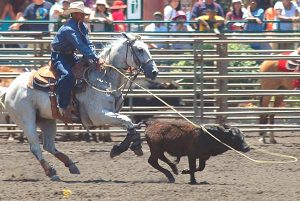 So the main problem with treed saddles is they need to be fitted properly to the horse’s back or they will load up unacceptable levels of pressure also. If they are not fitted correctly to a horse’s back it can cause anything from soreness to muscle atrophy and sometimes even damaged nerves.
So the main problem with treed saddles is they need to be fitted properly to the horse’s back or they will load up unacceptable levels of pressure also. If they are not fitted correctly to a horse’s back it can cause anything from soreness to muscle atrophy and sometimes even damaged nerves.
In a study by New Mexico State University’s National Agri-Marketing Club they collected data from 200 roping and barrel racing riders and their horses. Some of them had tack shop saddles and some rode custom saddles.
They found that over 45% of the saddles were causing pressure points greater than 3.6 psi. 3.6 psi is enough pressure to cause permanent damage on a horse’s back. 93% of these saddles showed the problem area in the font third of the saddle. 89 % of the 200 saddles showed some form of bridging.
This study doesn’t surprise me at all given that the overwhelming percentage of saddle buyers will buy a pre-built saddle from either a tack shop or the internet based only on their seat size. Almost no consideration, if any, is given to fit for the horse, other than narrow, medium or wide please.
A lot of custom saddlers are no better. Although they are building you a saddle to order, they often only ask for a wither tracing and a couple of pictures to fit a tree. A wither tracing really can only give enough information to pick tree width and bar spread. It gives absolutely no information on rock and twist.
Treeless Saddle ~ Applications
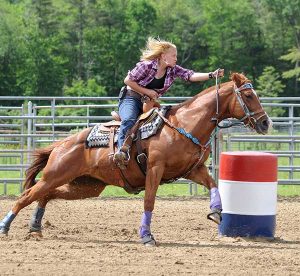
I said before I’m not totally 100% anti-treeless. I think treeless saddles are perfect for most horse trainers. Most horse trainers train multiple horses at a time. Usually about an hour a day and the majority of work is on fundamentals. They are not racing up and down in the mountains at extended trot or canter. For the most part, flat arena work. Since a trainer is on and off eight to ten horses a day, a treeless saddle can adapt to the different horse’s backs.
Treeless saddles are also great for the rider with multiple horses. It just depends on the body weight of the rider and how hard and long you ride. In general, if you are a lighter weight rider who rides a couple times a week at a slower pace, a treeless saddle will work fine for you. When you get into high rider weight and long, hard hilly or mountainous rides, the odds say that over time you are going to cause problems for your horse’s back.
Saddles With Trees ~ Applications
Look, this is what the scientific data has shown. A properly fit saddle with a tree is always going to have lower overall psi than a treeless saddle in the exact same application. Four things to keep in mind are:
- The heavier the rider
- The more often you ride
- The longer you ride
- The harder you ride
As these factors go up, the more you should be thinking about a saddle with a tree.
Whether you end up getting a saddle with a tree or a treeless saddle I always advise riders to make sure they have enough of a trial period. Go out and get three to five really good rides in. If you normally go for four to five hours at a fairly quick pace then that is how you should evaluate the saddle.

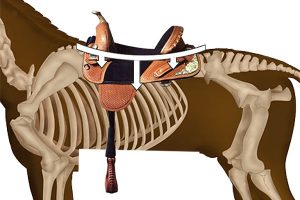
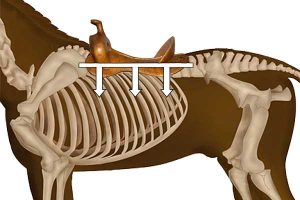
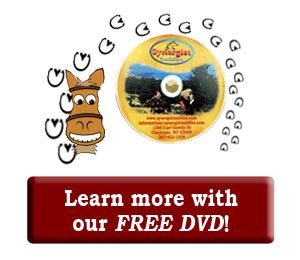
Comments 14
Fantastic article. I deal with improper fitting saddles constantly. Since we met at the Beartooth Ranch in Columbus, Montana I have recommended your saddles to many of my customers.
Thank you for this article. I am currently using a bareback pad and am rarely using my dressage saddle. I prefer the closer contact, and have been thinking I would get a treeless saddle at some point, since I am 58 years old, 115#, ride nearly daily but rarely longer than an hour, usually at walk with some trot and occasional canter. I don’t see that pattern changing much in the future, but would like whatever saddle I buy to be my last one, thus the treeless would also fit whatever horse might be in my future as well as my current mare. SO….thank you for making me feel more confident about that choice! If I decide to go with a tree, I am definitely planning to get one of yours though!
Great article. This just reaffirms why I purchased a custom made saddle built by you! Yay!
This is a wonderful article! Thank you for posting it. I agree 100%. I have gone back and forth on whether to use tree or treeless. While treeless seems so appealing because I am into natural I also understand the weight dispersion issue and it makes 100% complete sense.
Best article I have read so far concerning the treed vs treeless. Will help me with my next saddle selection. I’ll check out yours. Thank you.
Author
Thanks for the kind words!
I am still confused. When I read about treeless saddles, some professional endurance riders love them. I also know mounted police units who use them and work for hours in tough conditions. The police and endurance horses fit the three out of four criteria for treed saddles but they are happily functioning in treeless saddles until retirement. That said, I never heard of dressage professionals or barrel racers riding treeless.
I’m still on the fence about a treed or treeless saddle for my first horse and I have so much to learn. I wonder if endurance (frequency and length) doesn’t matter as much as our riding positioning and the complexity and difficulty of the movements that we ask our horses to perform?
Author
Hi Jean,
Definitely a person who rides well is going to impact the horse less than a poorly balanced rider. In endurance the rider mostly rides in a straight line, no quick turns or roll backs as in other disciplines, this could also be a factor.
that is a very good point. i have a barrel racing friend and she absolutely loves her treeless saddle! I have always been on the fence about them and she couldnt say enough good things about it. I just haven’t found enough information to sway me either direction. very good article though
This is a great article – very informative, gives an unbiased review of the pros and cons of the different saddle types. I will be starting my Paint Horse this summer and he will be ridden western style (I’m based in the UK where western is not as popular) so am doing my research in preparation, only the best for my boy! Thank you
Where does flex tree fit in the equation?
Author
Flex trees sit kind of in the middle of treeless and treed saddles. They have more weight dispersion than a treeless but not as much as a treed saddle.
Thank you for a straight forward and unbiased article. The inclusion of scientific data made it all that more bilateral and informative.
Having ridden multiple disciples, I have found close contact to be more favorable. I am in the process of purchasing my first treeless saddle.
Your article, one of very few, not only helped answer questions/concerns but increased my confidence in my purchase.
Many Thanks!
Thank you for a clear overview of the differences and the applications.